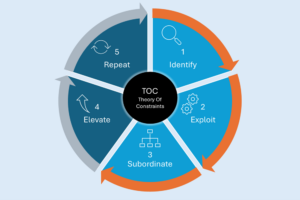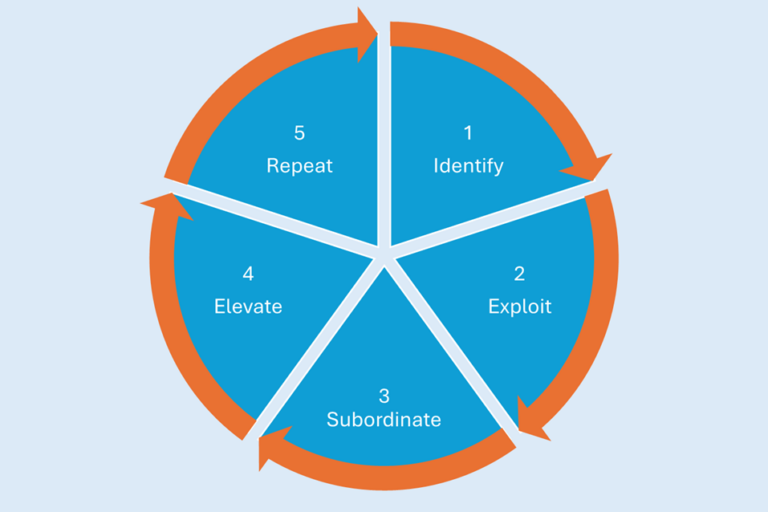Supply chain leaders have dealt with disruption since well before the pandemic. Strategies for addressing VUCA—an acronym that stands for volatility, uncertainty, complexity, and ambiguity—have circulated in business management journals for the better part of a decade. Industry watchers have warned about dangers that range from natural disasters to trade disputes.
And then, in 2020, the Covid-19 pandemic gave the world a dramatic illustration of what the specialists had been talking about.
Even the way the pandemic unfolded was filled with volatility, uncertainty, complexity, and ambiguity. Initially, it seemed like China’s problem. In the first few months of 2020, there was a virus in a Chinese city, Wuhan, of 14 million, in a province of 60 million people, Hubei—more or less the size of Italy. By March, a state of alarm had been declared, and seemingly from one day to the next, everyone was confined to their homes. We all learned new words like telework and Zoom.
Initially, the most prominent pandemic-related supply chain disruption was the search for PPE. Suddenly, we realized that globalization had made everyone highly dependent on Chinese manufacturing. We witnessed how weeks went by without masks or gloves. Then we learned that our national Purchasing Departments—our Ministries of Health—were unable to buy masks. The problem was amplified by negotiations about prices and payment conditions.
The goal was not to increase availability but to lower unit costs. On the other hand, the population was lied to and told that masks were not necessary. In the end, clothing manufacturers like Inditex put their logistical capacity and knowledge of the market at the service of the government and managed to plug the leak. It was a perfect example of Cost versus Availability.
Learning from supply chain disruption
The silver lining was that supply chain management took on strategic dimensions, catapulting into the news and onto the agenda of boards of directors. The impact of the economic crisis caused by Covid was uneven. For some sectors, like tourism, the effects were instant and disastrous. For others, like the IT and home improvement industries, it has been beneficial.
So, what can supply chain leaders learn from the pandemic? That we need to differentiate between two different tasks:
- The design of our global supply chains
- The management model that governs them
Disruption-ready supply chain design
From a design point of view, it is clear that companies will seek to reduce their dependence on China. This process will be long and complicated, but it will bring the West an opportunity to value more than price. In the last few decades, price won, but factors like availability, sustainability, and ecology will start to regain currency amongst Western consumers.
Disruption-ready supply chain management
When it comes to managing through a crisis, the events of the past year have only reinforced the importance of being able to adapt our supply chains to variability and volatility. In the past, this volatility was much higher on the demand side, but Covid has shown that it can happen with suppliers, too.
Companies that had already implemented a Demand Driven Adaptive Enterprise (DDAE) model saw that volatility can bring benefits. By applying planned buffer adjustments, they’ve been able to adapt to demand spikes more nimbly than their competitors, increasing market share and positioning themselves as strategic suppliers. The supplier that guarantees availability in a pandemic is irreplaceable. And when the going gets tough, you can see the difference between good companies and excellent ones.
In order to adapt to supply chain disruption, companies must focus on flow—and on maintaining capacity in the following three areas:
- Material: Current assets
- Capacity: Fixed assets
- Time and people
DDAE centralizes the management of these three aspects through material buffers, capacity buffers, and time buffers. It also recognizes that the size of each buffer is directly related to the others. The larger your capacity buffer, the smaller your time buffer will be.
Maintaining these buffers is crucial for being able to manage through variable and volatile markets. Why? Because they can be constantly adapted to the needs of the moment, at the operational, tactical, and strategic levels.
In this model, sales forecasts have a new purpose. Their goal is no longer to get the most accurate number, but to identify what to do with the buffers: increase them or decrease them, and by what percentage. If you knew the perfect buffer size, you wouldn’t need a buffer. Since we don’t know it precisely, we need it. This is the price we have to pay in the post-Covid era. If your goal is to provide service and guarantee product availability, you will have to implement an adaptive model. Managing these buffers is what guarantees adaptability.
If your only goal is to minimize costs, your survival will be in jeopardy. Because the question isn’t whether there will be another disruptive phenomenon, but when it will take place and what order of magnitude its impacts will be. Covid made the era of optimization obsolete, leaving many organizations vulnerable to the slightest disruptions.
Either we plan for potential disruptions and adapt our inventory buffers to fit this reality, or the market changes will make our systems fail and generate misaligned inventories. The focus of an adaptive system is to maintain high-quality inventories. The quality of the inventory is what guarantees its availability. In addition, quality naturally brings about a decrease in quantity. By not maintaining excess inventory, we decrease the number of obsolete items we produce, and emergencies disappear—even in a global crisis.













